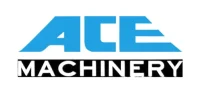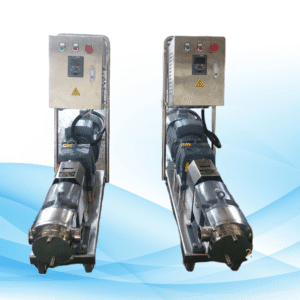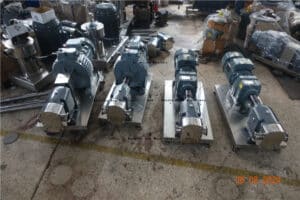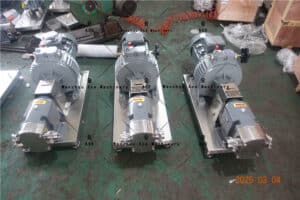Rotary lobe pumps are critical in fluid handling across various industries. These pumps work best when used on applications involving gentle treatment of viscous fluids. In different sectors like pharmaceutical, food and beverage, wastewater management among others; rotary lobe pumps are relied upon due to their efficiency and reliability. This guide aims at providing a comprehensive understanding of how rotary lobe pump work as well as its importance and practical applications.

Principle On Which They Work
Operating Mechanism
The working principle of a rotary lobe pump consists in counter-rotating two intermeshing rotors. When these rotors rotate they create expanding cavities on one side (inlet) and shrinking ones on another side (outlet). As a result there is created vacuum area which draws fluid into the pump then pushes it out again during rotation.
Flow Dynamics
Flow dynamics in these types of pumps depend largely on rotor design as well as speed. The even rotation of pair ensures uniform flow rate while large pumping chambers enable it handle solids without being damaged i.e., The flow will always be smooth hence making them suitable for gentle fluid handling applications.
Types of Rotary Lobe Pumps
Single Lobe
Single lobe pumps are equipped with only one lobe per rotor. These devices are characterized by simplicity and ease of maintenance that they offer. However, this design may lack the same level of efficiency as those having multiple lobes.
Multiple Lobe
Multiple lobe pumps on the other hand have two or more lobes per rotor. This type increases efficiency while reducing pulsation in fluid flow. Boerger Rotary Lobe Pumps are an example of these types since they have strong construction and high reliability. In addition to that; its multiple lobes enable it handle different applications including those involving solids.
Technical Specifications
Design and Construction
Materials Used
Manufacturers use various materials during construction of rotary lobe pumps such as stainless steel, cast iron or alloys amongst others. Stainless steel is used because it has good resistance against corrosion hence can be applied in food processing industries where hygiene matters most while cast iron provides durability at affordable cost for industrial purposes. On top of that; alloys increase ability to handle aggressive chemicals.
Design Variations
Rotary lobe pumps come in different design variations which can suit various tasks too.Single or multiple lobes for each rotor are some examples of these designs whereby single offers easy maintenance options but lacks higher efficiencies like multi configuration having reduced pulsations.Börger Rotary Lobe Pumps stands out due their strong design together with reliability.Customizable options also make users able choose what suits their needs best..
Performance Measurements
Rate of flow
For rotary lobe pumps, the rate of flow is one of the most important performance measures. The size, speed and design of the rotor determine this. Larger rotors and higher speeds will increase rates of flow. Steady transfer dynamics are achieved by maintaining consistent flows. Depending on the application they can handle very wide ranges of flow.
Pressure Capabilities
Fluid resistance overcoming ability is described as pressure capabilities for pumps like rotary lobe ones. They produce pressure via rotors that interlock and counter-rotate with each other. This causes a vacuum which pulls in fluid into it before pushing them out again at high pressures through them. These units can therefore be used in demanding applications where there might be need to pump against high levels of resistance such as Börger Rotary Lobe Pumps which have wear resistance properties coupled with long service life span thus guaranteeing reliable performance even under extreme conditions.
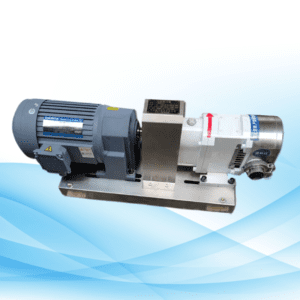
Pros & Cons
Merits
Efficiency
Rotary Lobe Pumps are efficient when transferring fluids from one place to another because they use positive displacement method. What this means is that it ensures constant rates regardless of viscosity variations among different liquids being pumped through it at any given time so useful for accurate handling needs in certain industries where materials may not come into contact with themselves too much hence reducing wear & tear while increasing lifespan for instance those made by Börger robustness show efficiency all along their usage period.
Versatility:
The versatility factor stands out strongly here – They can handle everything from low viscousity liquids right up-to highly viscos ones containing solid particles therefore making them suitable candidates even for use in sectors such as food processing industry where various typesof products have to be dealt with frequently as well wastewater management systems involving lots sludge transfers which would require larger pumping chambers able deal without getting blocked easily plus more standard materials casings still offer good protection against corrosion at places like stainless steel may not be necessary due some benefits need more durability than others so this device can cater for all these needs.
Downsides
Cost
Initial costs associated with purchasing rotary lobe pumps are usually high because they are designed using advanced technology and expensive materials among other factors. However, over long-term periods benefits normally outweigh investments made at first instance from them since energy consumption rates tend to be low as well maintenance practices required become minimum thus saving much money eventually so users should always consider total cost ownership during evaluation process for such devices.
Maintenance Requirements:
In order to maintain peak performance levels it is advisable that regular servicing should be carried out on rotary lobe pump like lubrication and inspecting various components part of it. Bearings together with timing gears usually wear out quickly hence need constant checks done preventively against any form of breakdown occurring which might interfere negatively upon its operation whereas non-contact rotors design also ensures less frequent repairs are done but still proper care should be taken by extending life span this equipment while preserving its efficiency too
Chemical Processing
These are used in chemical processing plants. Because they can handle corrosive fluids, Rotary lobe pumps have become an essential part of the industry. They can also deal with any aggressive chemicals that come their way. This is possible because they are made from customizable materials and come in many different designs which allow them to meet specific needs for each application. Börger Rotary Lobe Pumps offer strong performance as well as being low maintenance making them perfect for continuous chemical processing operations.
Maintenance and Troubleshooting
Routine Maintenance
Lubrication
In keeping with maintaining efficiency lubrication plays a vital role when using rotary lobe pumps. Regularly greasing bearings and gears will ensure they work properly without any problems occurring during operation time due to dryness or friction being experienced thereat . There are recommended lubricants provided by manufacturers according to model numbers so it would be wise following those recommendations since right application reduces wear out hence prolonging pump service life span even more than expected.
Inspection
To detect potential issues early on routine inspection should be done frequently. Rotors, shafts, seals need regular checks by technicians who may see signs of wear and tear through seeing them visually thus being able to take care of such parts before they lead into bigger challenges affecting performance levels positively . It is also important checking timing gears always since this ensures proper alignment thereby preventing mechanical failures from happening which could cause permanent damage on the machine itself if not addressed promptly enough . Therefore these tasks contribute greatly towards ensuring longevity of the pump involved.
Common Issues and Solutions
Leakage
It is common for leakage to occur when seals or gaskets get worn out . Regular inspections help in identifying worn out components earlier enough therefore replacement should be done immediately after noticing anything abnormal around those areas concerned with sealing off points where fluid might escape from one side into another causing inefficiency within system altogether . It’s necessary observing strictness during installation process sealing so that they fit tightly without any possibility of letting go once put into position thus minimizing chances of having leakages occurring within such systems being used at different times under varying conditions.
Noise and Vibration
Noise plus vibrations coming from machines usually indicate some mechanical problem somewhere within them . Misaligned rotors or worn out bearings are common sources for these issues hence need arises for proper maintenance practices which can help identify misalignments early enough before much damage gets done on other parts due to excessive shaking caused by such problems arising therefrom . Regular inspections serve well in this regard since those areas where alignment may not be correct could easily be visible through naked eyes when looking at them externally so one should always take care not only inspecting but also replacing old bearing with new ones whenever necessary while ensuring proper alignment of rotors during installation process itself thereby keeping everything smooth running all time round even during heavy loads where there might occur lots of friction forces between different surfaces rubbing against each other leading into further damages if ignored completely.
Summarize
Rotary lobe pumps provide a number of significant advantages when it comes to fluid handling across various industries. These types of pumps offer consistent flow rates because they rely on positive displacement mechanisms which ensure continuous supply as required by system being supplied . Another benefit associated with them is versatility because they can handle wide range fluids including highly viscous liquids with solid particles suspended within them hence becoming applicable in many areas depending on need at hand. In addition, regular maintenance coupled together with proper inspection work wonders towards increasing their life span even more than estimated. Having knowledge about how rotary lobe pump works and where it can be used best helps improve efficiency levels at work places.
